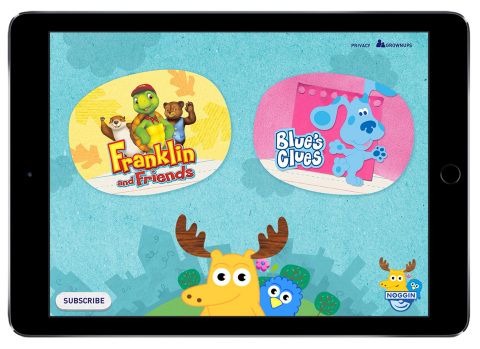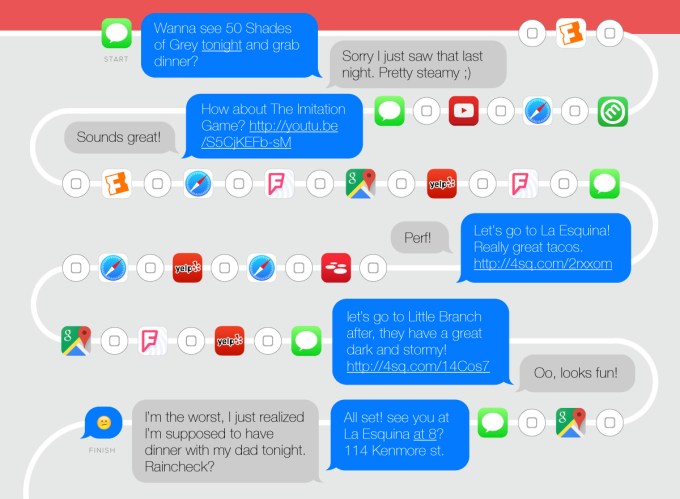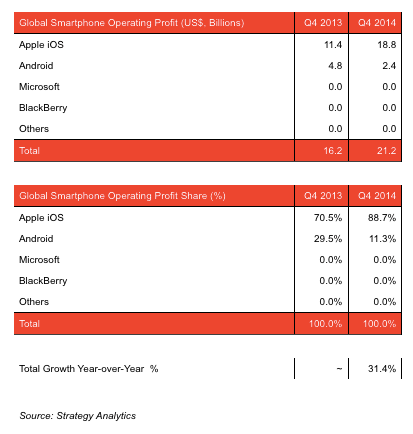Earlier this month, Razer launched the second generation of its ultra-high-resolution gaming laptop, the Blade. I’ve since gotten a few weeks to play with it and can confirm that its hardware lives up to the crazy QHD+ screen.
Like its predecessor, this year’s Razer Blade packs in a 14-inch, 3200 x 1800 pixel screen. It looks pretty from most angles and can get quite bright, and has a touch screen if you’re one of the Windows 8 users who actually takes advantage of touch-friendly menus. Photos and video really pop on the display — it’s not quite 4K, but considering it’s already past the point of not being able to discern pixels at reasonable distances, that’s not something anyone is going to miss.
Of course, what really matters is whether or not the new Blade can actually handle gaming at decent settings at the panel’s native resolution. The jump up to the Geforce 970M chipset has served the Blade well — I was able to crank graphics up to Ultra on a number of games and maintain 45-60 frames per second, only dipping into settings to turn off anti-aliasing or the highest motion blur settings.
 Razer Blade
Razer Blade  Razer Blade
Razer Blade  Razer Blade View Slideshow Previous Next Exit
Razer Blade View Slideshow Previous Next Exit
Between the new GPU and a mobile Core i7 typically reserved for larger laptops, the Blade is more than just a good gaming machine. If you’re the creative type, it’s also a great device for photo and video editing. Again, that screen really rounds out the package if you’re going to use it for either of these.
With the exception of the screen, you could say the same thing about the performance of most gaming laptops, as high-end hardware is a prerequisite for the category. So it’s worth talking about how the Blade manages to stand out in a space where most competitors share the same specs.
The case’s aluminum body is aggressive on the outside and classy on the inside. The keyboard, trackpad and speakers are laid out similarly to a MacBook Pro. There’s a comfortable amount of space between keys, and you won’t accidentally hit the power button when you were going for delete. The trackpad is exceptional for a Windows laptop, with gesture support that doesn’t lag or mistake down for up. The left and right mouse buttons below the trackpad don’t provide a very satisfying click, but if you’re gaming on this thing you’ll probably use a separate mouse anyway.
While the black aluminum looks great when you take it out of the box, oil from your hands really stands out across the Blade’s surface. It took us a few minutes to scrub down the laptop each time we wanted to take pristine photos, so some may find this annoying.
On the part of the outer shell that most people will see, you find two bumps and a bright green Razer logo. If you’re incredibly self-conscious, be aware that it’s going to draw attention among a see of flat surfaces and Apple logos. As with the interior of the laptop, be prepared to see fingerprints on the outside of the Blade in most lighting conditions.
On the bottom of the laptop, there are long rubber strips keeping the Blade slightly elevated. That leaves room for the two fans to get hot air away from the hardware. During regular use, the Blade is essentially silent — but crank up the graphics on a game from the last few years, and they can get rather loud. As with the “meh” speakers, I don’t expect many gamers to notice, since the kind of people who buy a $2,200 gaming laptop probably have decent headphones for 3D audio or multiplayer communication.
Gaming on a laptop has always involved a trade-off between performance and convenience. You could pick up a desktop PC that absolutely crushes the Blade in gaming performance for less, and among laptops, you could get a heavier, uglier beast with better specs and save a few hundred dollars. But some people care about performance and aesthetics. For those gamers, the Blade is the best compromise available.
Like its predecessor, this year’s Razer Blade packs in a 14-inch, 3200 x 1800 pixel screen. It looks pretty from most angles and can get quite bright, and has a touch screen if you’re one of the Windows 8 users who actually takes advantage of touch-friendly menus. Photos and video really pop on the display — it’s not quite 4K, but considering it’s already past the point of not being able to discern pixels at reasonable distances, that’s not something anyone is going to miss.
Of course, what really matters is whether or not the new Blade can actually handle gaming at decent settings at the panel’s native resolution. The jump up to the Geforce 970M chipset has served the Blade well — I was able to crank graphics up to Ultra on a number of games and maintain 45-60 frames per second, only dipping into settings to turn off anti-aliasing or the highest motion blur settings.
Between the new GPU and a mobile Core i7 typically reserved for larger laptops, the Blade is more than just a good gaming machine. If you’re the creative type, it’s also a great device for photo and video editing. Again, that screen really rounds out the package if you’re going to use it for either of these.
With the exception of the screen, you could say the same thing about the performance of most gaming laptops, as high-end hardware is a prerequisite for the category. So it’s worth talking about how the Blade manages to stand out in a space where most competitors share the same specs.
The case’s aluminum body is aggressive on the outside and classy on the inside. The keyboard, trackpad and speakers are laid out similarly to a MacBook Pro. There’s a comfortable amount of space between keys, and you won’t accidentally hit the power button when you were going for delete. The trackpad is exceptional for a Windows laptop, with gesture support that doesn’t lag or mistake down for up. The left and right mouse buttons below the trackpad don’t provide a very satisfying click, but if you’re gaming on this thing you’ll probably use a separate mouse anyway.
While the black aluminum looks great when you take it out of the box, oil from your hands really stands out across the Blade’s surface. It took us a few minutes to scrub down the laptop each time we wanted to take pristine photos, so some may find this annoying.
On the part of the outer shell that most people will see, you find two bumps and a bright green Razer logo. If you’re incredibly self-conscious, be aware that it’s going to draw attention among a see of flat surfaces and Apple logos. As with the interior of the laptop, be prepared to see fingerprints on the outside of the Blade in most lighting conditions.
On the bottom of the laptop, there are long rubber strips keeping the Blade slightly elevated. That leaves room for the two fans to get hot air away from the hardware. During regular use, the Blade is essentially silent — but crank up the graphics on a game from the last few years, and they can get rather loud. As with the “meh” speakers, I don’t expect many gamers to notice, since the kind of people who buy a $2,200 gaming laptop probably have decent headphones for 3D audio or multiplayer communication.
Gaming on a laptop has always involved a trade-off between performance and convenience. You could pick up a desktop PC that absolutely crushes the Blade in gaming performance for less, and among laptops, you could get a heavier, uglier beast with better specs and save a few hundred dollars. But some people care about performance and aesthetics. For those gamers, the Blade is the best compromise available.
 Sometimes when a company reports in-line earnings, its stock price takes a knuckle to the temple. Other times, if a firm meets market expectations, it gets a nice pop in value.
Sometimes when a company reports in-line earnings, its stock price takes a knuckle to the temple. Other times, if a firm meets market expectations, it gets a nice pop in value. AirPR, a startup promising a fresh approach to public relations, has sold its PR marketplace to marketing agency The CHR Group.
AirPR, a startup promising a fresh approach to public relations, has sold its PR marketplace to marketing agency The CHR Group.
 Editor’s note: Chuck Fishman is the media, entertainment and publishing director for Acquia. Super Bowl XLIX was the most-watched television show in U.S. history. It was also the most socialized Super Bowl ever measured, with 265 million Facebook posts, likes and comments, and more than 28 million global tweets. Today’s TV viewer doesn’t just watch TV anymore — they scroll through Twitter and Facebook in real time, watch YouTube Videos, send Snapchats and pin to Pinterest boards.Their attention span is limited as they consume across multiple channels simultaneously, and the experience they create by consuming in this way is multi-dimensional, providing a unique opportunity for brands to meet them wherever they are — online or off.Many media companies are taking advantage of this opportunity through multi-channel engagement and second-screen experiences. Shows like NBC’s The Voice have rolled out live-voting programs to engage viewers not just through television, but through social and text, too. The approach of connecting with viewers through activities such as live voting is called the “lean forward” model, and seeks to capture consumer attention wherever the consumer is, whatever platform they’re on.The USA Network’s Modern Family Live employs the lean forward method as well, offering viewers a chance to compete live with other fans of the show to score points, climb the Live leaderboard, and hopefully come out on top with a prize pack from the show.The “lean back” model seeks to hold fan engagement beyond the time constraints of regularly scheduled programming. The Walking Dead is a great example of this — they introduced a post-mortem talk show, “The Talking Dead,” to keep viewers engaged even after the show has ended.Better Call Saul, a Breaking Bad spin-off, has a web experience separate from the show for Saul’s “legal practice” and offers viewers the chance to sign up to get emails from Saul direct to their inbox. The show also offers viewers a live digital component tied to the broadcast called a “story sync” at BetterCallSaulStorySync.com.All of these tactics are pre-programmed ways for networks to engage with their audiences through conversations that are happening around their programming — before, during and after.As media companies experiment with capturing viewer attention on- and off-screen, they must engage fans across channels.But what about the moments when a trending topic emerges unexpectedly, and media companies are caught unprepared? Super Bowl XLIX’s “Left Shark” is a prime example — he completely stole the show during halftime with Katy Perry, and arguably came out the biggest star of the game behind MVP Tom Brady. Left Shark now has 20,000 followers on Twitter.Some brands have famously succeeded at this — like when Oreo capitalized on the blackout during Super Bowl XLVII with this memorable tweet and associated tagline: “You can still dunk in the dark.” Yet there is still much room for learning and improvement. As media companies experiment with capturing viewer attention on- and off-screen, they must engage fans across channels — via social media, in-app experiences, live participation, interactive portals and more. They need to recognize that the only way for this to work is to capture audiences where they already exist. Building out an approach to do that is no simple task.With digital-native companies like Netflix, Showtime, Hulu and Amazon getting into the content production game, engaging audiences is critical. Networks need to find ways to continue the conversation not just during scheduled programming, but in between shows. To date, networks’ attempts at creating second-screen experiences haven’t consistently taken off.Second screen action often happens on social channels that networks don’t own, and therefore can’t control, but they do have the ability to capture and amplify what’s happening.Tools like Spredfast “Conversations” can help networks target their viewers through the right social channels at the right time, increasing and improving engagement. Janrain, a customer identity platform that pulls profile data from sources like Facebook and Twitter, realized the market need to deliver and curate social media. The firm just bought Arktan to be able to provide the second-screen content to media clients; current Arktan customers include Sony Music, WWE, A&E and Turner Entertainment. Marrying the profile data from Janrain with the social content from Arktan in a single solution allows these media companies to identify the fans that talk the most about their entertainment properties and then elevate these fans and their conversations to the entire audience.Another way media companies are approaching the second screen is to create original and exclusive digital video content that stands apart from linear broadcast programming. There is now a dedicated week for digital video content creators to shop their digital-only programming to advertisers called the “NewFronts.” The NewFronts line-up for 2015 includes a roster of publishers that are now producing quite a volume of video content, including Time Inc., Conde Nast and The Wall Street Journal. This original content competes with the digital extensions of any broadcast content, making it even harder to capture the attention of those on mobile or desktop platforms.While media companies are trying to leverage the second screen to reach consumers on digital platforms, major advertisers are also leveraging the same approach with some success. During the Super Bowl, Volvo created a Twitter competition around game day ads. “The Greatest Interception Ever” garnered 15,000 mentions for the brand and seamlessly blended television with social for a cross-channel, second-screen success. McDonald’s also launched its “Pay with Lovin’” campaign, tweeting out giveaways for other brands after each of their television spots aired. Those giveaway tweets were retweeted 5,000-10,000 times each, some even in excess of 10,000 times.So the question remains — how do networks and other media companies build interactive web platforms for today’s viewers?For one, they can start by looking at where viewers are spending the majority of their second-screen time and what they’re doing there. A 2014 Nielsen Digital Consumer Report said that 84 percent of U.S. smartphone and tablet owners watch television with a second screen in hand. That means that if executed properly, there’s almost double the opportunity to reach viewers that there once was. Then, media companies can meet the consumer in those places, delivering a personalized, targeted message that is much more likely to resonate.As new media content players enter the field and viewer habits change, it’s an exciting time in the world of entertainment — and it’s also a high-stakes moment for media companies. Brands that create engaging, on-target digital experiences and engage — and win over — audiences across channels will come out as the winners.
Editor’s note: Chuck Fishman is the media, entertainment and publishing director for Acquia. Super Bowl XLIX was the most-watched television show in U.S. history. It was also the most socialized Super Bowl ever measured, with 265 million Facebook posts, likes and comments, and more than 28 million global tweets. Today’s TV viewer doesn’t just watch TV anymore — they scroll through Twitter and Facebook in real time, watch YouTube Videos, send Snapchats and pin to Pinterest boards.Their attention span is limited as they consume across multiple channels simultaneously, and the experience they create by consuming in this way is multi-dimensional, providing a unique opportunity for brands to meet them wherever they are — online or off.Many media companies are taking advantage of this opportunity through multi-channel engagement and second-screen experiences. Shows like NBC’s The Voice have rolled out live-voting programs to engage viewers not just through television, but through social and text, too. The approach of connecting with viewers through activities such as live voting is called the “lean forward” model, and seeks to capture consumer attention wherever the consumer is, whatever platform they’re on.The USA Network’s Modern Family Live employs the lean forward method as well, offering viewers a chance to compete live with other fans of the show to score points, climb the Live leaderboard, and hopefully come out on top with a prize pack from the show.The “lean back” model seeks to hold fan engagement beyond the time constraints of regularly scheduled programming. The Walking Dead is a great example of this — they introduced a post-mortem talk show, “The Talking Dead,” to keep viewers engaged even after the show has ended.Better Call Saul, a Breaking Bad spin-off, has a web experience separate from the show for Saul’s “legal practice” and offers viewers the chance to sign up to get emails from Saul direct to their inbox. The show also offers viewers a live digital component tied to the broadcast called a “story sync” at BetterCallSaulStorySync.com.All of these tactics are pre-programmed ways for networks to engage with their audiences through conversations that are happening around their programming — before, during and after.As media companies experiment with capturing viewer attention on- and off-screen, they must engage fans across channels.But what about the moments when a trending topic emerges unexpectedly, and media companies are caught unprepared? Super Bowl XLIX’s “Left Shark” is a prime example — he completely stole the show during halftime with Katy Perry, and arguably came out the biggest star of the game behind MVP Tom Brady. Left Shark now has 20,000 followers on Twitter.Some brands have famously succeeded at this — like when Oreo capitalized on the blackout during Super Bowl XLVII with this memorable tweet and associated tagline: “You can still dunk in the dark.” Yet there is still much room for learning and improvement. As media companies experiment with capturing viewer attention on- and off-screen, they must engage fans across channels — via social media, in-app experiences, live participation, interactive portals and more. They need to recognize that the only way for this to work is to capture audiences where they already exist. Building out an approach to do that is no simple task.With digital-native companies like Netflix, Showtime, Hulu and Amazon getting into the content production game, engaging audiences is critical. Networks need to find ways to continue the conversation not just during scheduled programming, but in between shows. To date, networks’ attempts at creating second-screen experiences haven’t consistently taken off.Second screen action often happens on social channels that networks don’t own, and therefore can’t control, but they do have the ability to capture and amplify what’s happening.Tools like Spredfast “Conversations” can help networks target their viewers through the right social channels at the right time, increasing and improving engagement. Janrain, a customer identity platform that pulls profile data from sources like Facebook and Twitter, realized the market need to deliver and curate social media. The firm just bought Arktan to be able to provide the second-screen content to media clients; current Arktan customers include Sony Music, WWE, A&E and Turner Entertainment. Marrying the profile data from Janrain with the social content from Arktan in a single solution allows these media companies to identify the fans that talk the most about their entertainment properties and then elevate these fans and their conversations to the entire audience.Another way media companies are approaching the second screen is to create original and exclusive digital video content that stands apart from linear broadcast programming. There is now a dedicated week for digital video content creators to shop their digital-only programming to advertisers called the “NewFronts.” The NewFronts line-up for 2015 includes a roster of publishers that are now producing quite a volume of video content, including Time Inc., Conde Nast and The Wall Street Journal. This original content competes with the digital extensions of any broadcast content, making it even harder to capture the attention of those on mobile or desktop platforms.While media companies are trying to leverage the second screen to reach consumers on digital platforms, major advertisers are also leveraging the same approach with some success. During the Super Bowl, Volvo created a Twitter competition around game day ads. “The Greatest Interception Ever” garnered 15,000 mentions for the brand and seamlessly blended television with social for a cross-channel, second-screen success. McDonald’s also launched its “Pay with Lovin’” campaign, tweeting out giveaways for other brands after each of their television spots aired. Those giveaway tweets were retweeted 5,000-10,000 times each, some even in excess of 10,000 times.So the question remains — how do networks and other media companies build interactive web platforms for today’s viewers?For one, they can start by looking at where viewers are spending the majority of their second-screen time and what they’re doing there. A 2014 Nielsen Digital Consumer Report said that 84 percent of U.S. smartphone and tablet owners watch television with a second screen in hand. That means that if executed properly, there’s almost double the opportunity to reach viewers that there once was. Then, media companies can meet the consumer in those places, delivering a personalized, targeted message that is much more likely to resonate.As new media content players enter the field and viewer habits change, it’s an exciting time in the world of entertainment — and it’s also a high-stakes moment for media companies. Brands that create engaging, on-target digital experiences and engage — and win over — audiences across channels will come out as the winners.


 The office space biggest deals in 2012 include Zynga, Salesforce and Square.
The office space biggest deals in 2012 include Zynga, Salesforce and Square. 2013’s biggest deal is Google’s lease for 372,000 square feet up around the Embarcadero.
2013’s biggest deal is Google’s lease for 372,000 square feet up around the Embarcadero. 2014 almost broke office leasing records in the city with major deals from Salesforce, LinkedIn to Uber going all-in on buying up land to build its own headquarters in Mission Bay.
2014 almost broke office leasing records in the city with major deals from Salesforce, LinkedIn to Uber going all-in on buying up land to build its own headquarters in Mission Bay. Kiko Labs Debuts A Series Of “Brain-Training” Games For KidsBrowse more...nickelodeon
Kiko Labs Debuts A Series Of “Brain-Training” Games For KidsBrowse more...nickelodeon Nickelodeon To Debut A Subscription-Based Video Streaming Service This Spring
Nickelodeon To Debut A Subscription-Based Video Streaming Service This Spring
 Messaging app Viber has quietly made its games service available for all users worldwide following a two month pilot in five countries.
Messaging app Viber has quietly made its games service available for all users worldwide following a two month pilot in five countries. Math can be fun, but try telling that to a small child stuck behind a desk doing endless drills and worksheets. Founded by a former game developer, startup LocoMotive Labs’ mission is to make learning mathematic basics entertaining for all children, no matter their learning styles.
Math can be fun, but try telling that to a small child stuck behind a desk doing endless drills and worksheets. Founded by a former game developer, startup LocoMotive Labs’ mission is to make learning mathematic basics entertaining for all children, no matter their learning styles. While IBM is number-one when it comes to the number of patents filed in the U.S., in Europe, Samsung is leading the pack. Today, the European Patent Office released 2014 figures for patents filed in the region, which showed that the Korean company, and currently the world’s largest smartphone maker, filed 2,541 for the full year. In terms of countries, the U.S. dominated the list, with 71,700, or 26% of all patents, filed.
While IBM is number-one when it comes to the number of patents filed in the U.S., in Europe, Samsung is leading the pack. Today, the European Patent Office released 2014 figures for patents filed in the region, which showed that the Korean company, and currently the world’s largest smartphone maker, filed 2,541 for the full year. In terms of countries, the U.S. dominated the list, with 71,700, or 26% of all patents, filed.




 With its extremely high smartphone penetration rate, speedy broadband connections, and advanced economy, South Korea is one of the richest breeding grounds for tech innovation in Asia. 500 Startups, which has already made several investments in Korean companies, is digging deeper into the country with the launch of 500 Kimchi, a $15 million fund that will focus on mobile companies.
With its extremely high smartphone penetration rate, speedy broadband connections, and advanced economy, South Korea is one of the richest breeding grounds for tech innovation in Asia. 500 Startups, which has already made several investments in Korean companies, is digging deeper into the country with the launch of 500 Kimchi, a $15 million fund that will focus on mobile companies. United we stand, divided we fall. So goes the old saying that search and mobile giant Google is now taking to heart in Europe, as it faces off with regulators and rivals in the region. The company is merging its European regional and product operations into a single unit, to be led by Matt Brittin, formerly the head of Google’s operations in northern and western Europe.
United we stand, divided we fall. So goes the old saying that search and mobile giant Google is now taking to heart in Europe, as it faces off with regulators and rivals in the region. The company is merging its European regional and product operations into a single unit, to be led by Matt Brittin, formerly the head of Google’s operations in northern and western Europe. It’s only been about three months since home-sales marketplace Opendoor has been open for business, but it is already making its market on residential real estate in Phoenix, Ariz. As it looks to expand into two new cities, the company has raised $20 million in additional funding led by GGV Capital.
It’s only been about three months since home-sales marketplace Opendoor has been open for business, but it is already making its market on residential real estate in Phoenix, Ariz. As it looks to expand into two new cities, the company has raised $20 million in additional funding led by GGV Capital. Google announced this morning the launch of a pilot program which will allow mobile application developers the ability to advertise their apps directly within the Google Play store. These ads, which will initially be made available to advertisers already running search ads on Google.com, will also only be shown against Google Play search results. That is, they won’t just randomly appear in other sections of Google Play, like category pages or stuffed in the middle of Google Play’s Top Charts.
Google announced this morning the launch of a pilot program which will allow mobile application developers the ability to advertise their apps directly within the Google Play store. These ads, which will initially be made available to advertisers already running search ads on Google.com, will also only be shown against Google Play search results. That is, they won’t just randomly appear in other sections of Google Play, like category pages or stuffed in the middle of Google Play’s Top Charts.

 Last December, Docker previewed its plans to launch a comprehensive set of orchestration tools for its container platform and, starting today, developers will be able to download and use all of these tools.
Last December, Docker previewed its plans to launch a comprehensive set of orchestration tools for its container platform and, starting today, developers will be able to download and use all of these tools. AdvertisementGoogle Search was not built for mobile. It’s all about lists of web pages, but the small screen is ruled by apps. That’s why if Google launched today, it might look a lot like Vurb…which did launch today.
AdvertisementGoogle Search was not built for mobile. It’s all about lists of web pages, but the small screen is ruled by apps. That’s why if Google launched today, it might look a lot like Vurb…which did launch today.
 All the app-switching you have to do to plan a night out across fragmented, unbundled mobile apps
All the app-switching you have to do to plan a night out across fragmented, unbundled mobile apps The Vurb team, including CEO Bobby Lo (second from left) celebrate their TechCrunch Disrupt Battlefield 2014 win
The Vurb team, including CEO Bobby Lo (second from left) celebrate their TechCrunch Disrupt Battlefield 2014 win


 Google’s Android has gobbled up market share world wide, now accounting for over 80% of all smartphone shipped globally. But when it comes to actually making money, Apple is eating all the profits as it continues its focus on premium devices. Today Strategy Analytics said that Apple in Q4 last year accounted for 89% of all smartphone profits, equating to $18.8 billion, with Android taking only 11%, or $2.4 billion.
Google’s Android has gobbled up market share world wide, now accounting for over 80% of all smartphone shipped globally. But when it comes to actually making money, Apple is eating all the profits as it continues its focus on premium devices. Today Strategy Analytics said that Apple in Q4 last year accounted for 89% of all smartphone profits, equating to $18.8 billion, with Android taking only 11%, or $2.4 billion.




 Dutch Mobile Networking Event & Place
Dutch Mobile Networking Event & Place